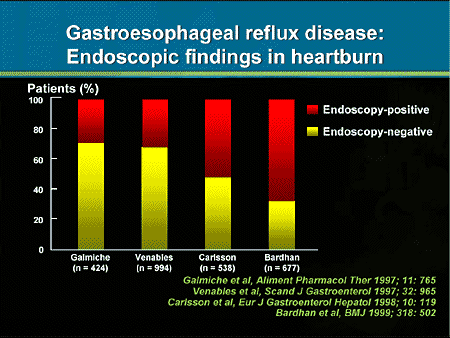

Although MRI and endoscopy yield comparable diagnostic accuracy, dynamic MRI sequences are able to visualize hiatal hernias that were occult on static MRI sequences or endoscopy in a relevant number of cases. Real-time MRI is a fast and safe modality for assessment of the gastroesophageal junction, without radiation exposure or administration of gadolinium-based contrast media. Sixteen of the 63 MRI-detected hernias (25.4%) were detectable only during Valsalva maneuver, which were smaller compared to hernias at rest (median − 13.5 vs − 33.0 mm, p 0.99). Seventeen hernias were evident exclusively on MRI, and 22 exclusively on endoscopy. Forty-six hernias were visible on both modalities. Eighty-five patients (79.4%) were diagnosed with hiatal hernia on either real-time MRI or endoscopy.

No perforation or acute bleeding occurred during endoscopy. Of 108 patients, 107 underwent successful MRI without adverse events 1 examination was aborted to inability to swallow pineapple juice in supine position. Hernia detection on MRI and endoscopy was calculated using contingency tables with diagnosis of hernia on either modality as reference. Real-time MRI was performed at 3.0 Tesla with temporal resolution of 40 ms, dynamically visualizing the esophageal transport of a pineapple juice bolus, its passage through the gastroesophageal junction, and functional responses during Valsalva maneuver. One hundred eight patients with GERD-like symptoms were included in this observational cohort study between 20. To assess the diagnostic potential of real-time MRI for assessment of hiatal hernias in patients with GERD-like symptoms compared to endoscopy.


 0 kommentar(er)
0 kommentar(er)
